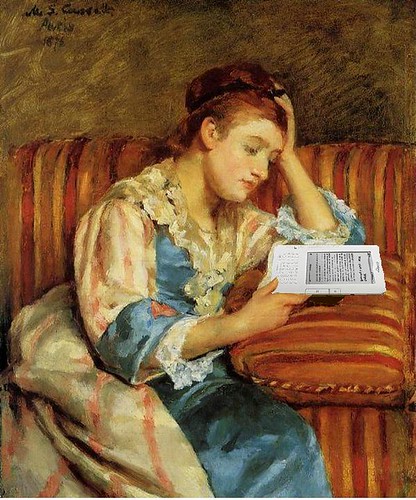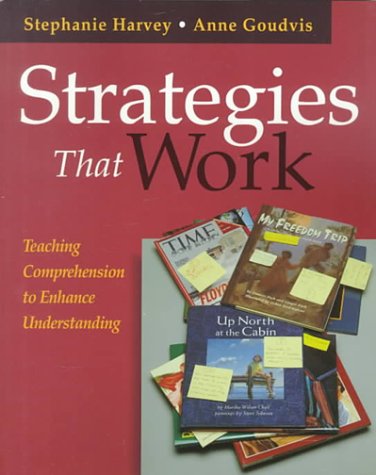
My colleague Robert Rozema has asked me to speak at the Michigan Council of Teachers of English annual conference later this week about where the “common core conversation” is at in Michigan.
So, I have gathered a few resources that trace CCSS implementation in our state, and across the nation, including the current debate.
This is not meant to be exhaustive, but instead to be a set of resources that can inform our critical, careful conversations about what we, as English teachers, can do moving forward in an era of CCSS. Interestingly enough, not much of this conversation involves actual students, a point I will return to at the end of this post.
CCSS Origin(s)
Like all origin stories, the CCSS’s is a bit murky, depending on who you ask. The “official” story, as reported on the CCSS website (emphasis is mine) is that:
The Common Core State Standards Initiative is a state-led effort that established a single set of clear educational standards for kindergarten through 12th grade in English language arts and mathematics that states voluntarily adopt.
and
The nation’s governors and education commissioners, through their representative organizations the National Governors Association (NGA) and the Council of Chief State School Officers (CCSSO) led the development of the Common Core State Standards and continue to lead the initiative. Teachers, parents, school administrators and experts from across the country together with state leaders provided input into the development of the standards.
and
States across the country collaborated with teachers, researchers, and leading experts to design and develop the Common Core State Standards. Each state independently made the decision to adopt the Common Core State Standards, beginning in 2010. The federal government was NOT involved in the development of the standards. Local teachers, principals, and superintendents lead the implementation of the Common Core.
A critique of this official narrative is that, because of the timing of the Race to the Top competition and the actual date the standards were finished, most states signed on to the standards without really knowing what they were or would be. I could say quite a bit, but will refer you to NCTE’s “An Open Letter to NCTE Members about the Common Core State Standards” and the edited collection by Patrick Shannon, Closer Readings of the Common Core. These pretty much debunk the myth of the CCSS as an educator- and parent-led initiative. In short, this was NOT a teacher-led initiative, and David Coleman (among others) have had a heavy hand in the highly-corporatized effort.
Race to the Top and the States’ “Choice” to Sign on to CCSS
Still, the CSSS was introduced to the states as a part of the US DOE’s Race to the Top program in 2009. The Wikipedia entry on all this is pretty good, so I will just get to the details. In order for states to be eligible for RTTT money, they had to have legislation in place that adopted more rigorous standards. Page 17 in this official document for RTTT application says:
Under criterion (B)(1)(ii), Phase 1 applicants will earn points based on the extent to which they demonstrate commitment to and progress toward adopting a common set of K-12 standards by August 2, 2010. Phase 2 applicants will earn points based on whether they have adopted a common set of K-12 standards by August 2, 2010.
In short, Michigan (like other states wanting to “compete” for federal money) had to adopt CCSS, even though it is labeled as a “state” initiative. The legislation went into effect on January 4, 2010. Again, it is interesting to note that the CCSS, in its final form, wasn’t introduced until June 2, 2010. And, of course, hindsight shows us that Michigan failed to win the race, because we did not earn federal dollars in either our phase one or subsequent applications. However, we did sign on to the CCSS, eliminated teacher tenure, raised the cap on charter schools, introduced more virtual schools, and created the Educational Achievement Authority. Stay tough, nerd! So, what a deal we got in the RTTT bargain, one that Granholm has now used to describe how we can reach energy independence, too. We’ll see how that goes.
Up to Now: The Current CCSS Controversy
Fast forward three years, with the new SBAC and PARCC assessments on the horizon for 2014-15. Besides the glaring infrastructure problems brought on by the digital divide that will still make all this testing impossible, there is a renewed (or, is it just new?) controversy about the CCSS. Why now, you ask? Well, this piece in Slate, “Common What?” by Alexander Russo, does a pretty good job of bringing us right up to the moment about the debate surrounding the CCSS. In short, the reasons for hating the CCSS are quite different. For the right, according to Russo,
“… while it’s not a federal program, it certainly has strong federal support, enough to make it a controversial program that some Republican politicians have felt the need to back away from.”
For the left, he summarizes by stating that
“[l]iberal opponents describe Common Core as a crude mandate that’s going to push arts and science even further out of schools, limit the teaching of literature and creative writing in classrooms, and end up being used to rate schools and teachers unfairly.”
And, for those of us caught in the middle, it has led to some confusion, frustration, and anger. In Michigan, it appears (for the moment) that the state will allow education funding for CCSS initiatives. We have the Michigan Coalition for High Student Standards — including partners such as varied as Dow Chemical and Steelcase to the MEA and AFT — advocating for the CCSS and, in turn, the federal money and testing that comes with them. On the other side, we have local, grassroots groups like Save Michigan’s Public Schools and the broader coalition formed by Diane Ravitch, the Network for Public Education.
As of the time of this blog post (September 30, 2013), the latest news I can get from MLive reports that:
Despite an Oct. 1 deadline that would stop funding for the Common Core State Standards in Michigan, lawmakers in the Michigan Senate are not going to rush to approve a concurrent resolution approved Thursday by the state House of Representatives.
Interestingly enough, the House stripped out an “amendment which would have required state lawmakers to also take the same exams as students” because “the cost for test materials and scoring for the entire Michigan Legislature alone would have exceeded $3,300.” Really? I bet that we could pass the hat and come up with that much money so our legislators could have the same pleasure as our students.
Another element that is particularly disheartening, especially given this essay by Benjamin Winterhalter in Salon, is that our legislature is considering “a contractor that provides electronically-scored essays with the ability to score constructed response feedback in multiple languages and provide ongoing instruction and feedback” (Bottom of page 1503). Apparently, they missed the memo from NCTE about machine scoring.
What’s Next
As Alfie Kohn has recently stated,
One of the key features of the conventional wisdom, the dominant ideology, is that we no longer recognize it as such because we hear it so often. There’s no food for thought here; everyone just knows that our students are lousy, or that raising test scores would improve our economy, or that grit is good; there’s no need to defend these propositions.
Groups like the Badass Teachers Association, FairTest, United OptOut, Ravitch’s Network for Public Education are trying to push against the dominant narrative. We have collected some other resources on our SchoolTM wiki that may be useful in addition to the ones provided by those groups. Moreover, this is about kids. While test scores may be rising, slightly, the fact is that EAA schools are not at the center of their communities. They are test prep factories. What kind of future are we creating for kids who fail to find interest in learning?
I doubt that we will solve any of these problems in our conversation later this week, but I hope that we might continue to move forward with our efforts to help teachers and students in the small ways that we still can despite the overwhelming forces that are against us.
 This work is licensed under a Creative Commons Attribution-NonCommercial-ShareAlike 3.0 Unported License.
This work is licensed under a Creative Commons Attribution-NonCommercial-ShareAlike 3.0 Unported License.

















